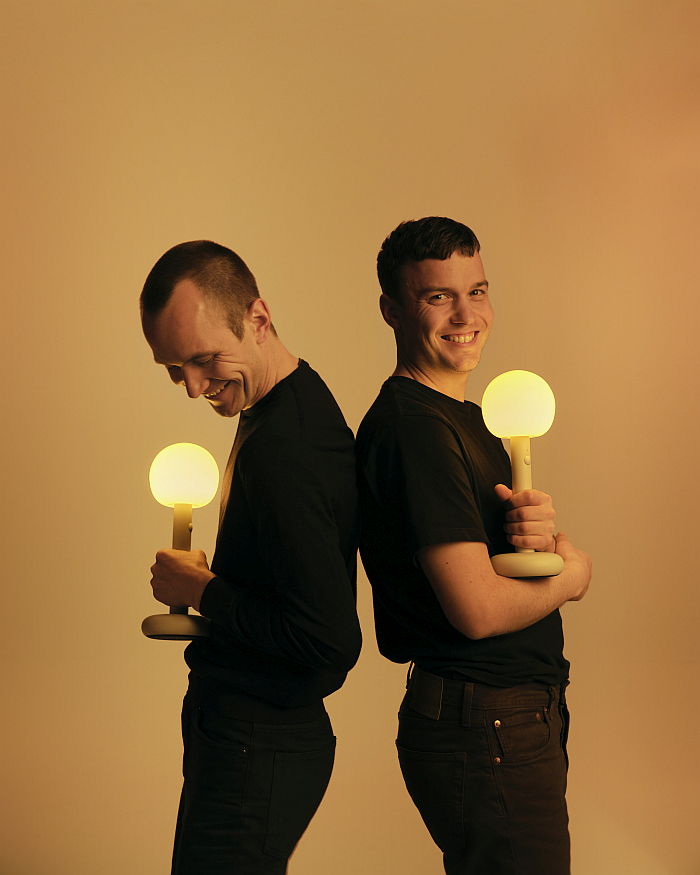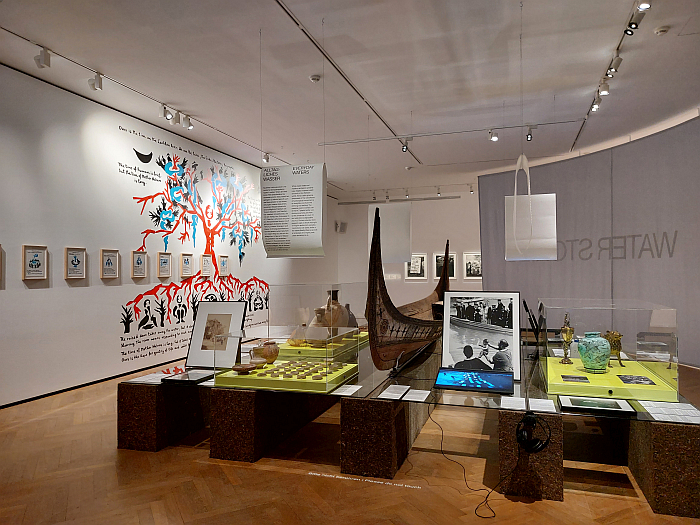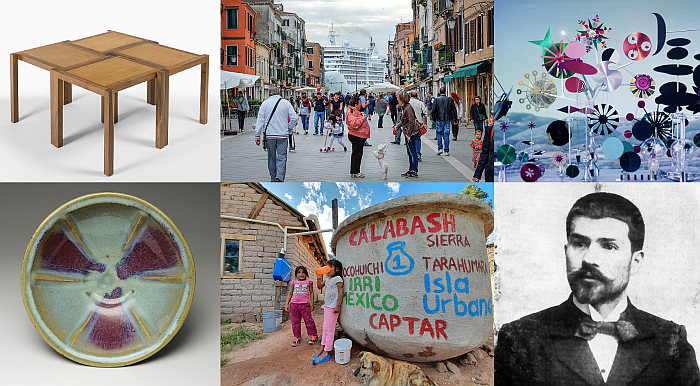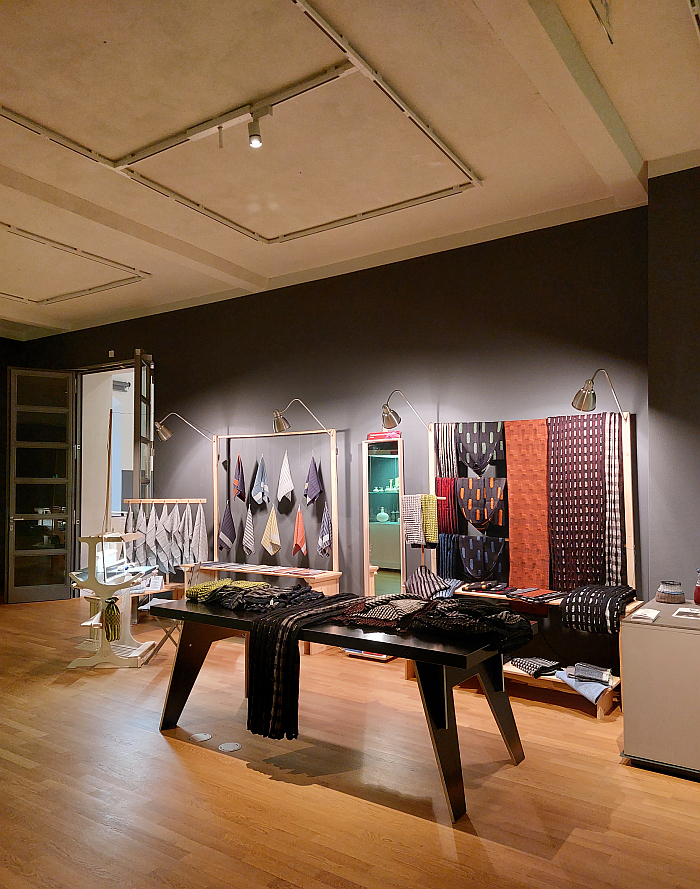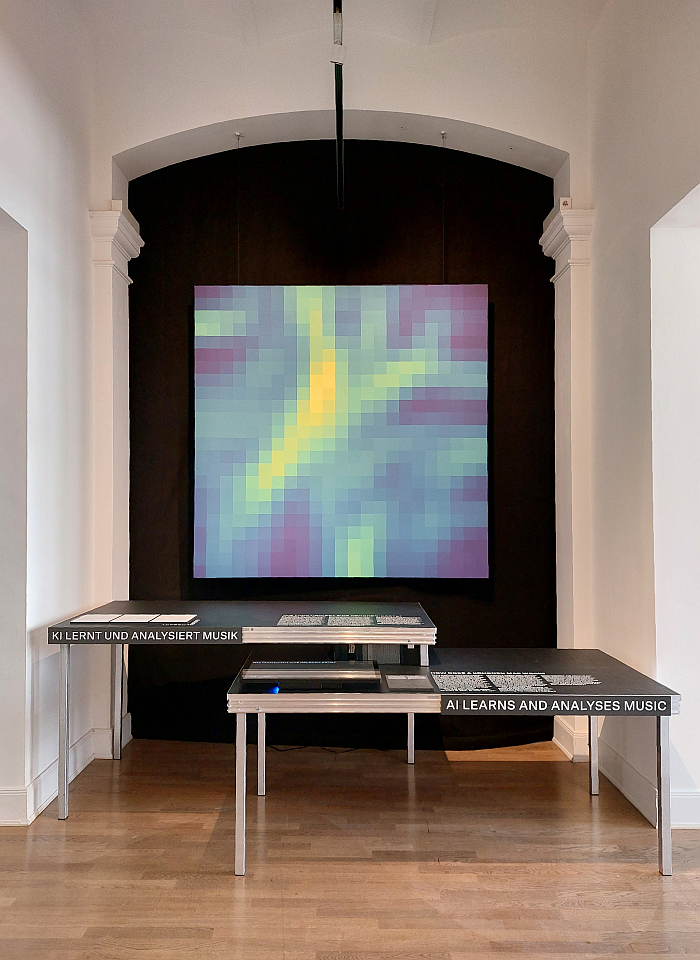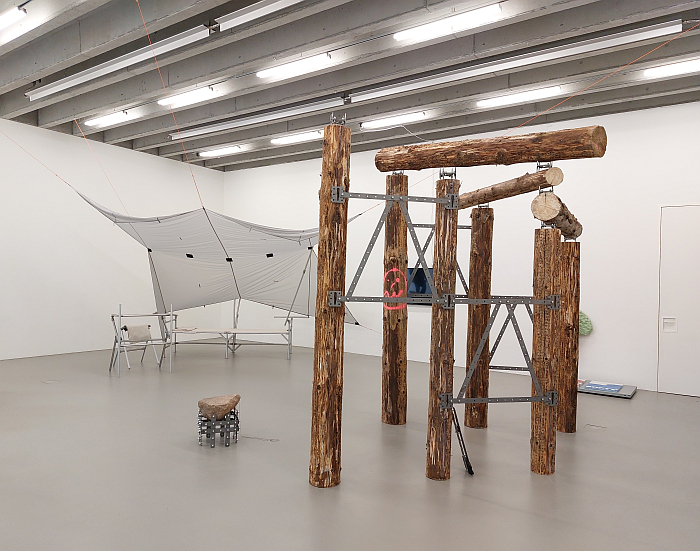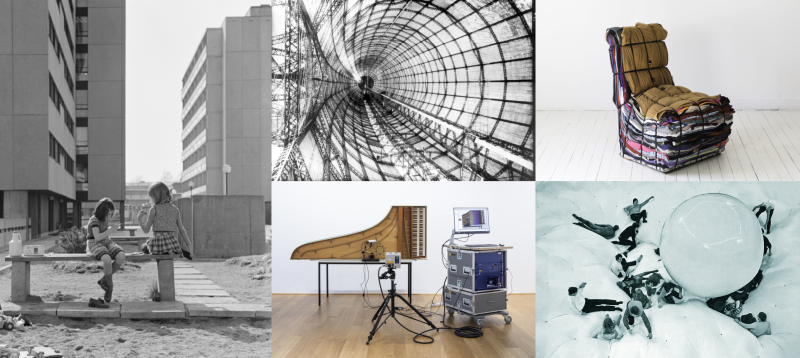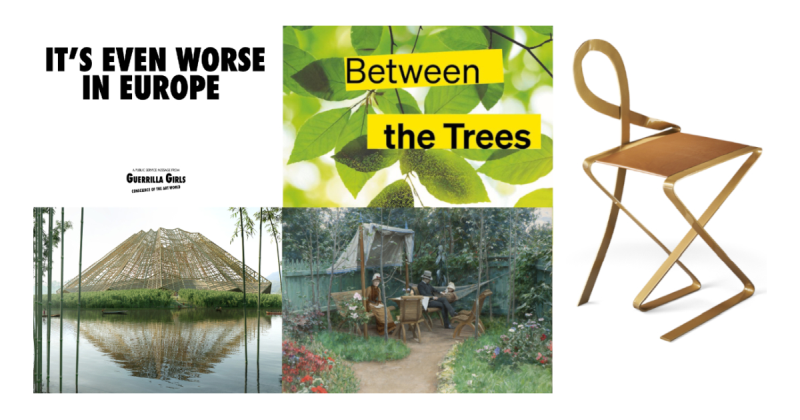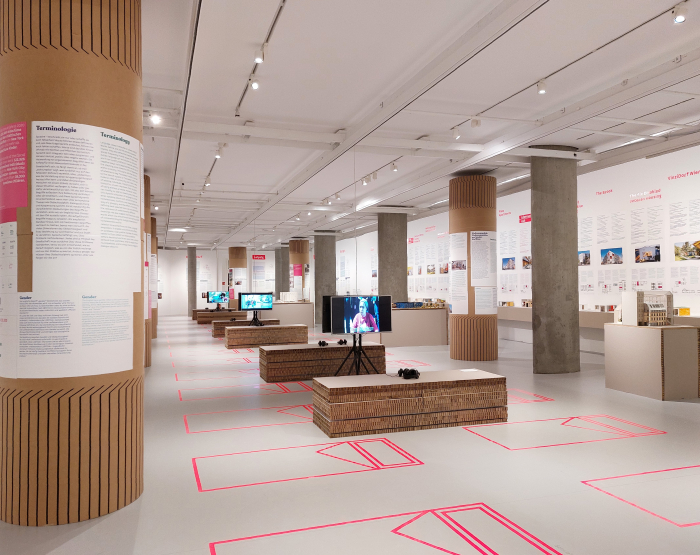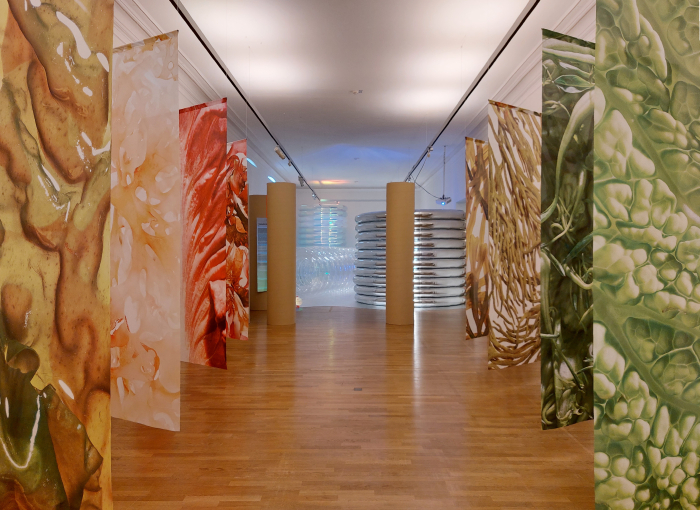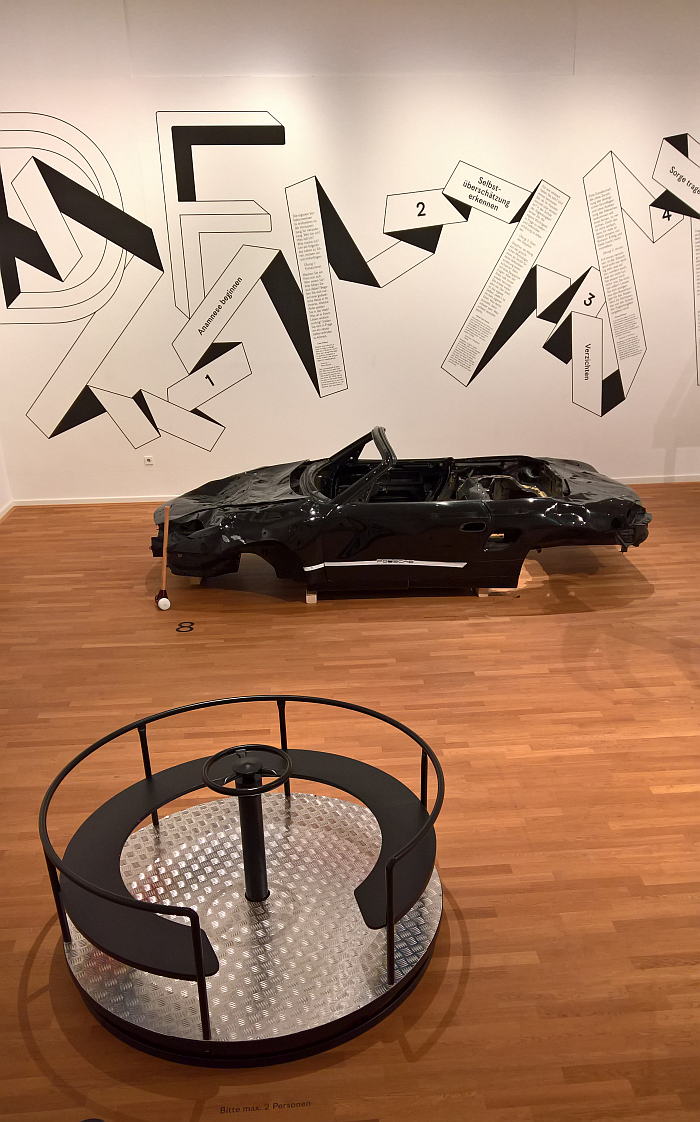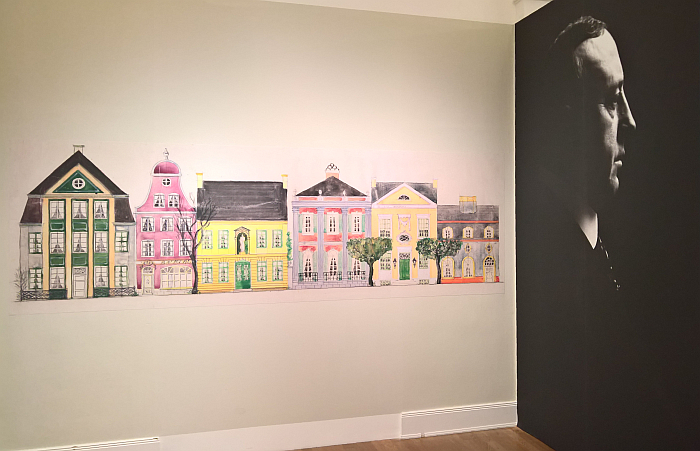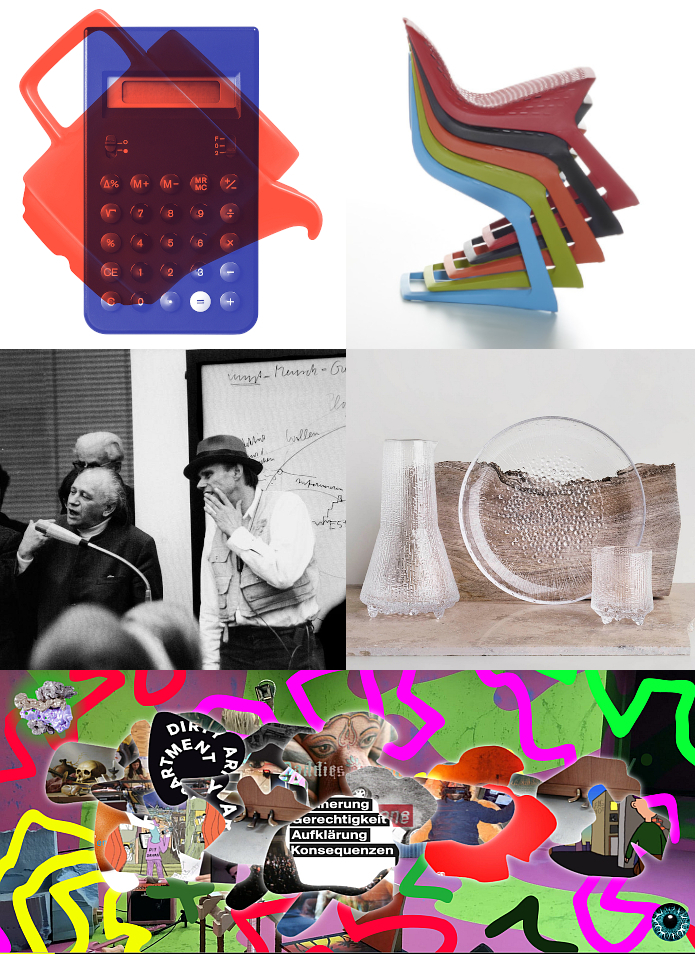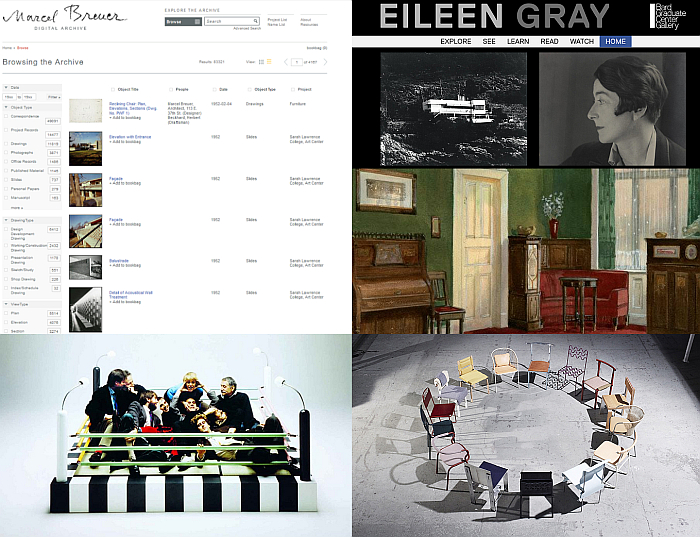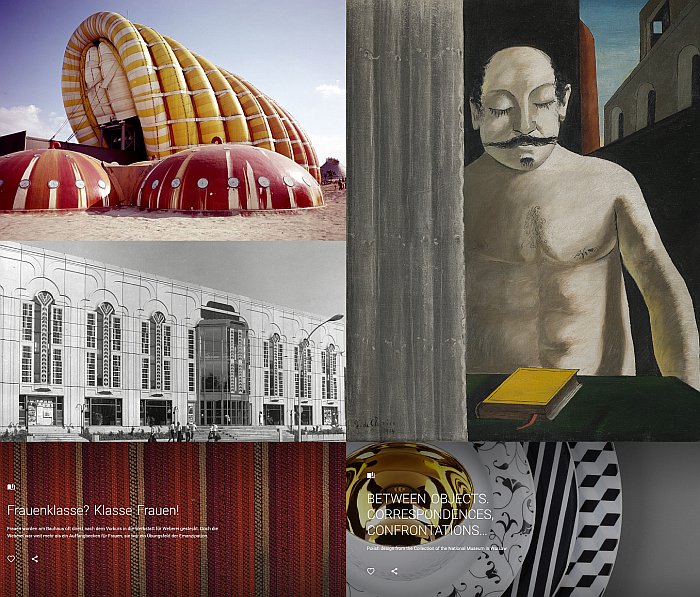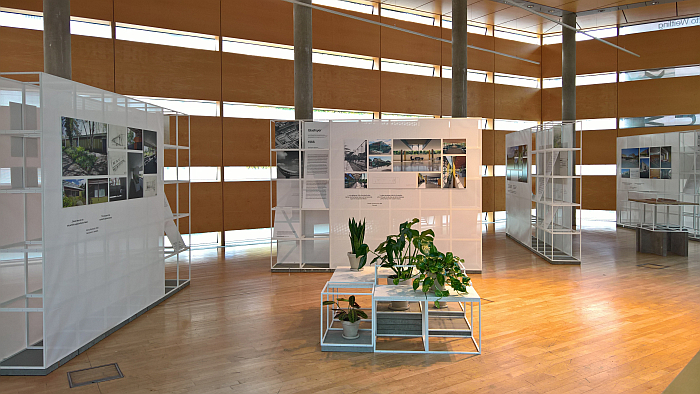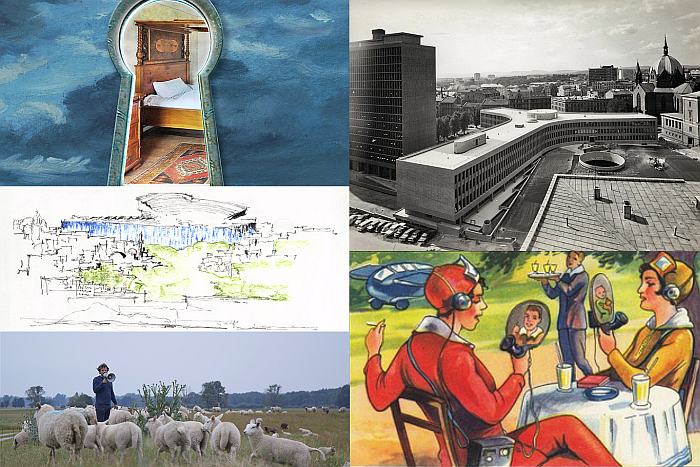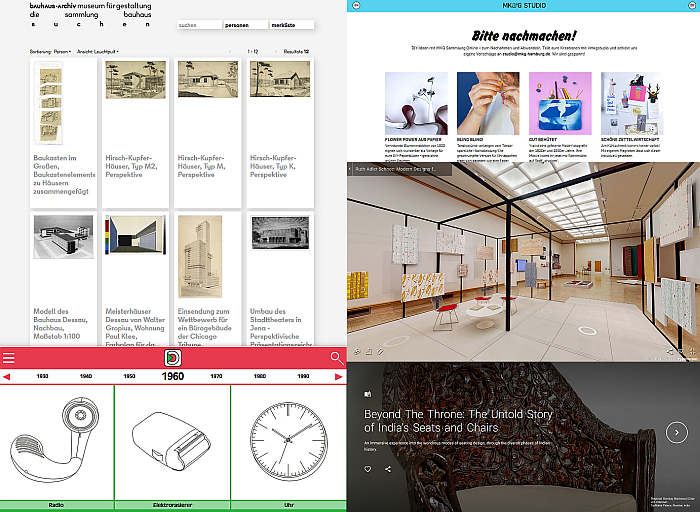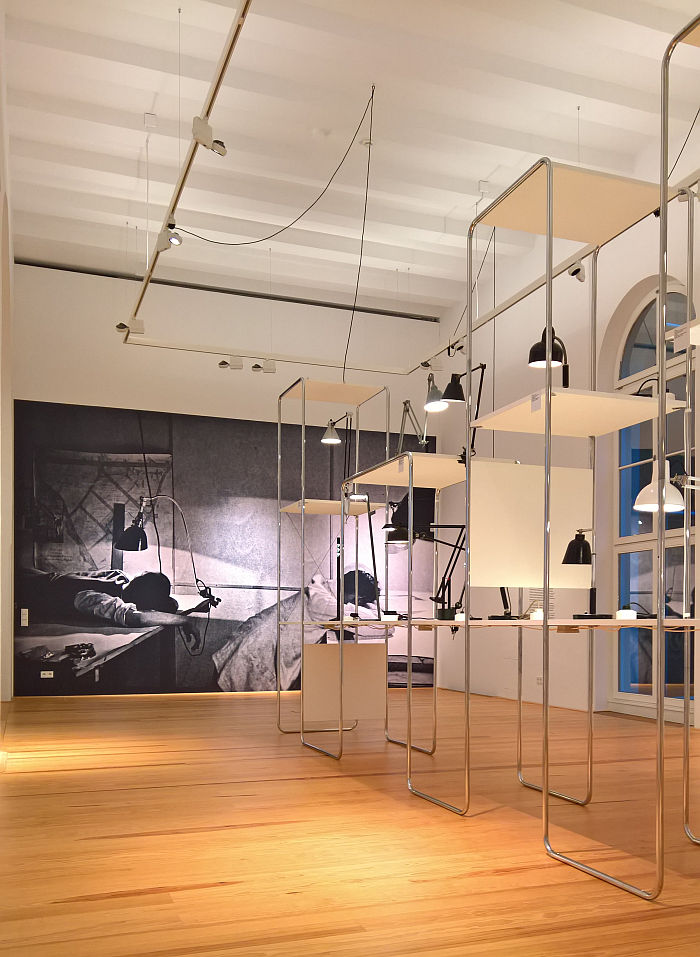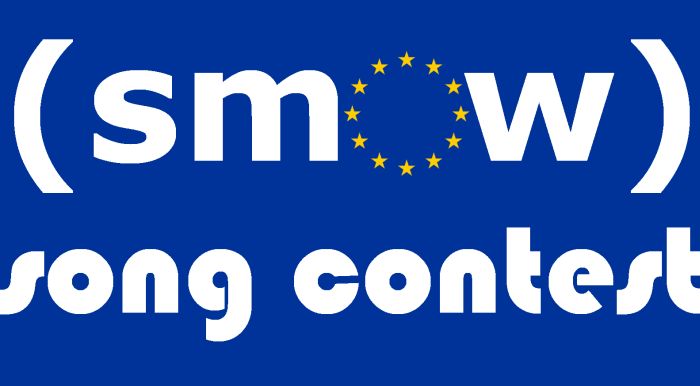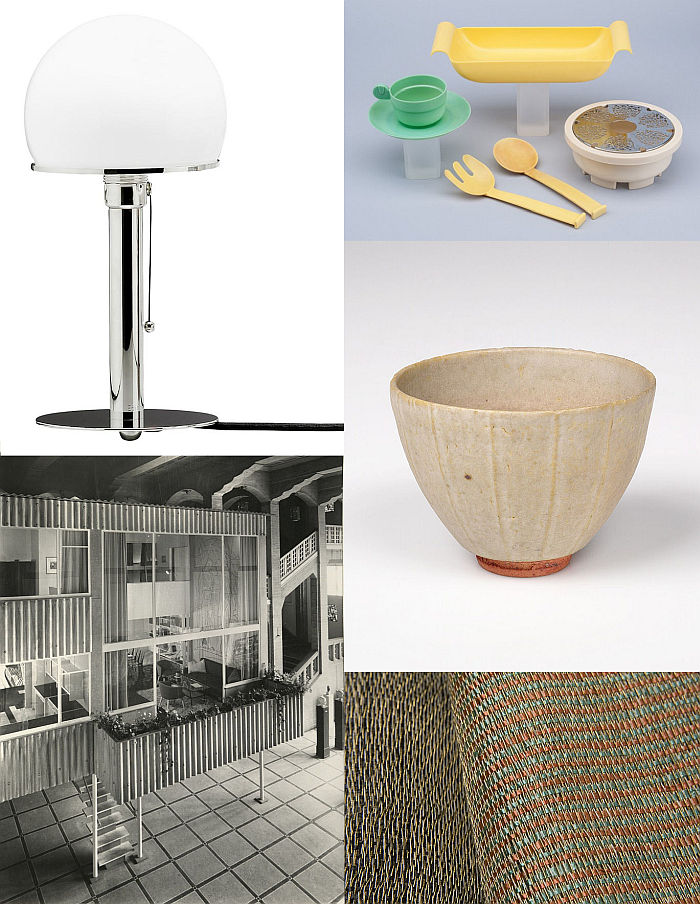5 New Architecture & Design Exhibitions for September 2024
Across the northern hemisphere September generally marks the start of the academic year, be that in primary, secondary, tertiary or quaternary education contexts, as students at all levels return to their studies after the long summer break.
And while quinary education may not need an official start, or indeed a structured year, there is not only something appropriate in opening a new chapter in your studies alongside that of your fellow students, but for all the number and variety of new architecture and design exhibitions opening globally every September, as the international museum community return from their long summer break, positively invites you do so.
September 2024 being no exception. We could easily have published three lists of recommendations, decided to stick with the traditional one, a list that takes us all to Hamburg, Brühl, Falkenberg, Katowice and Bonn, but for all to the dominion of expanded appreciations of architecture, design, society, possibilities, and thus fires the desire to travel ever further, to continue your eduction…….
smow Blog Interview: Timon and Melchior Grau – We want to create lighting moods that really touch you
Water Pressure. Designing for the Future at the Museum für Kunst und Gewerbe, Hamburg
It would inarguably, and inexcusably, be little more than employing a lazy, cheap, unwarrantable, stereotype and innuendo to opine that Hamburg is an apposite location for an exhibition exploring and discussing human societies’ relationships with water, being as it is a city where the incessant, clinging drizzle is only interrupted by the regular torrential downpours; rather, Hamburg is an apposite location for an exhibition exploring and discussing human societies’ relationships with water, as it is a city where the incessant, clinging drizzle is only interrupted by the regular torrential downpours. And because not only the fortunes and stature of the city were built on water, for all in the distant days of the fabled Hanseatic League, and of the pirates who cooperated with the city’s Hanseatic era leaders in their desires to assert Hamburg’s primacy on the Elbe1, but also Hamburg is physically built on, and for all physically built in, water. Which means that not only the streets and canals and banks – river and financial – of Hamburg offer access to perspectives on and of our relationships with water past and present, but that our relationships with water future will, invariably, be expressed through, and embodied by, Hamburg’s future. Or lack thereof.
With Water Pressure. Designing for the Future the Museum für Kunst und Gewerbe, Hamburg, not only create space for that exploration of and discussion on human societies’ relationships with water, but also for reflections on the roles, functions and responsibilities of design, and designers, in context of forming and defining our relationships with water past, present and future…….
5 New Architecture & Design Exhibitions for March 2024
In Shakespeare’s A Winter’s Tale Perdita bewails that she has no “flowers o’ th’ spring” to make garlands for, and to strew over, her beloved Florizel; “flowers o’ th’ spring” including violets, primroses, oxlips or “daffodils, That come before the swallow dares, and take the winds of March with beauty”.
Whereby in her infatuation with, and fearless youthful love for, Florizel, Perdita fails to appreciate that it wasn’t fear of the winds of March that kept the swallows away, swallows love a stiff wind; rather that they are all in architecture and design museums enjoying the new blush of exhibitions that invariably blooms forth every March. As should she and Florizel, for the shared experience of an architecture and design exhibition is a more sustainable and resilient conduit to maintaining the thrill of young love than a violet, primrose, oxlip or daffodil that will soon wilt and fade.
Our six, yes six, ‘exhibitions o’ th’ spring’ opening in March 2024 for swallows, lovers, Elizabethans, and us all, can be found in Hamburg, Vienna, New York, London, Paris and Weil am Rhein……
Can You Hear It? Music and Artificial Intelligence at the Museum für Kunst und Gewerbe, Hamburg
Music was my first love, And it will be my last,
Music of the future. And music of the past.
confided to us all the English singer John Miles in 1976, and thereby both tending to confirm the fundamental place music has, has had, in human civilisations and societies, music as an ancient and eternal force in human civilisation and society, and also through setting the future before the past, a setting, yes, not unrelated to the requirements and provisions of the ancient laws of rhyme, most poetically reminding us all that that which is before us will one day, via processes we don’t understand yet seek to control, be behind us.
And thereby also reminding us all that the music of the future is every bit a component of a contemporary society as is the music of the past.
With the exhibtion Can You Hear It? Music and Artificial Intelligence the Museum für Kunst und Gewerbe, Hamburg, offer space for reflections on music, and musicians, past, future and present.
And by extrapolation for reflections on design past, future and present…….
Hochschule für Bildende Künste Hamburg Graduate Show 2023: Unfinished Business
As we noted, almost exactly 12 months ago, although we here at smow Blog are more or less fully up and running again after the Covid enforced disruption, the extremely complex nature of the smow Blog machinery means that there are still a few elements of the whole that are awaiting a proper re-boot, including, as we noted almost exactly 12 months ago, our famed, and falafel fixated, annual #campustour through European design school summer exhibitions.
Which doesn’t mean that we aren’t visiting design school summer exhibitions. We very much are. Nor does it mean we aren’t eating falafel. We very much are. Just means we’re doing so in a much less structured, less coherent, manner. And means that we don’t always have the time and space to post from those showcases we visit. But do always try. Last year, admittedly, our attempts didn’t get much beyond Weimar. And (nominally) Brussels. Although we were at a great many more.
This year we’re hoping for a much improved number of postings, starting in Hamburg and the Hochschule für Bildende Künste’s 2023 Graduate Show, Unfinished Business…….
5 New Architecture & Design Exhibitions for May 2023
In the northern Hemisphere May is a month of ritual; rituals primarily associated with the awakening of nature, the approaching of summer with the associated hope of a successful and bountiful harvest. And rituals which include, amongst many others, maypoles in various contexts, bonfires for various reasons and a myriad dances, including the traditional English children’s dance/game Nuts in May, with its repetition of the line “Here we come gathering nuts in May”… which obviously raises the pertinent question, which nuts can, could, should one gather in England in May? Or indeed anywhere in northern Europe in May? Are they not all a bit underdeveloped in May? Is gathering nuts in late summer, early autumn not a more worthwhile experience? As squirrels do.
So, children and adults alike, don’t waste your time looking for edible nuts in May and invest your time instead in visiting an architecture and/or design exhibition and thereby gathering fresh perspectives and insights in May.
Our five recommendations for new shows opening in May 2023 can be found in Hamburg, Rotterdam, Helsinki, Friedrichshafen and, once again, Rotterdam…….
5 New Architecture & Design Exhibitions for February 2023
According to Germanic folklore: A wet February brings a fruitful year.
And that, we’d argue, not only in terms of vegetation, but also in terms of your individual personal development: a wet February meaning more time spent in museums and thus an enhanced opportunity to engage in meaningful and relevant and motivating discourses and discussions. An ideal environment in which to allow your appreciations of and positions to the world around you to optimally develop, swell, ripen and nourish.
So come on February…… Rain!!!
Our five recommended growth stimulating shelters for February 2023 can be found in Cologne, Stockholm, Hornu, Hamburg and Montréal…….
Who’s Next? Homelessness, Architecture and Cities at the Museum für Kunst und Gewerbe, Hamburg
Globally some 100 million individuals are classed as homeless, with untold millions more living in precarious, unsafe, unhealthy conditions.1
And the problem isn’t new. Just one of the great many that as a global society we’ve never managed to get on top off.
With the exhibition Who’s Next? Homelessness, Architecture and Cities the Museum für Kunst und Gewerbe, Hamburg, both offer insights into global homelessness and also demand fresh impetus for finding more meaningful ways forward…….
Ask Me if I Believe in the Future at the Museum für Kunst und Gewerbe, Hamburg
Against the background of an ongoing climate emergency, rising nationalism, ever more politically active religious fanaticism of all hues, a Covid pandemic that refuses to go quietly, the return of War to Europe, amongst a great many other contemporary existential ills, there are a myriad questions we’d all rather be asked than if you believe in the future?
We’d all like to believe, but, well…….hhhmmm……. you know…….
The Museum für Kunst und Gewerbe Hamburg however considered the question particularly apposite, necessary even.
And so asked.
And ask.
smow Song Contest 2022
Following smow Turin’s thoroughly unexpected, if in no way undeserved, victory in the 2021 smow Song Contest, it’s off to Piemonte for the 2022 edition.
A 2022 smow Song Contest being held very much in context of events 20 years previous…….
smow Song Contest 2021
After a long, challenging, year the smow Song Contest finds itself exactly where it was: Rotterdam.
Not just the location, but the stage, the decoration, the costumes, even the bier en frieten exactly as they were twelve months ago.
The decisive, defining, difference between the 2020 smow Song Contest and the 2021 smow Song Contest being the new understandings, the new perceptions, the new perspectives, the new vitality, the new passions, the new desires, the new old new, articulated by the contest’s motto: Open Up!
School of No Consequences. Exercises for a New Life at the Museum für Kunst und Gewerbe, Hamburg
“What would it mean to live life as lightly as possible?” asks the exhibition School of No Consequences. Exercises for a New Life at the Museum für Kunst und Gewerbe Hamburg, “what would it mean to live life in a way that had as small an impact as possible?”
What indeed……
Peter Gustaf Dorén. Interior Design in Hamburg circa 1900 at the Museum für Kunst und Gewerbe, Hamburg
“Conservative Hamburg only permits white paint for its ceilings, doors and windows, and, at most, economical gilding”, remonstrated once the decorative painter Peter Gustaf Dorén.1
And set about rectifying that, set about bringing more colour to Hamburg……
5 New Architecture & Design Exhibitions for March 2021
Following the declaration of the French Republic in 1792 a new calendar was introduced in the realms of France: the Revolution had washed away France past and the Republic marked the start of a new reality for mankind, one of universal Liberté, Égalité, Fraternité, and therefore demanded a resetting of the collective clock, a new measuring of time, and thus out went the Gregorian calendar and its historic associations with church and state, and in came le calendrier républicain, the French Republican Calendar.
And while, yes, one can consider the belief amongst the new republicans in the eternal gloriousness of the coming future as somewhat naive, one must remember that we can reflect on their optimism with the benefit of over 200 years hindsight and experience.
The argument for a new calendar appears however as compelling and self-evident as it must have done at its adoption on October 24th 1793. Or 3 Brumaire II, as we believe le calendrier républicain would date the day of its adoption.
Aside from its ten day week, an early attempt at bringing decimalisation to our time keeping, and the bequeathing of every day its own unique name, the principle difference between the Gregorian and Republican calendars is the move from the 12 months of varying lengths inherited from the Romans to twelve months each comprising thirty days, three ten day weeks, and the renaming of the months to give them a connection to nature rather than to Romans: the period between 19/20th February and 19/20th March, that period in which we find ourselves at the time of writing, being known as Ventôse, from venteux, windy, and was preceded by Pluviôse, rainy, and followed by Germinal, germination
Which all strikes us as particularly apposite as we move towards the next phase of our post-pandemic society; as a fresh wind blows the global rain clouds away and ushers in a period of re-birth and springing forth. Yes, such optimism may be as naive as that of the French revolutionaries, but we have a much better understanding of history today, and for all a much better understanding of the sense and logic in, utter necessity of, making use of the myriad lessons of history in order to avoid the pitfalls and follies of the past, and to allow us to chart an untroubled course forward……oh…..hang on……
Although, now is as good a time as any to start. The theory is known, we just need to move into the practice. And so given that all nations and all peoples have had their Corona tribulations should we not think about re-setting our global clocks, starting afresh at a new global year zero for a new global society?
We’ll leave others more qualified than us to work out the practicalities and technicalities, and decide on the basis of the nomenclature, and instead recommend here four new exhibitions scheduled to open in Germinal CCXX, and thus, one hopes, once the winds of Ventôse have begun to do their job, and also recommend a radio station that’s been online since the rains of Pluviôse….
5 (New) Architecture & Design Exhibitions for February 2021
Alongside the Chinese and Korean New Year celebrations one of the most popular observances in any given February is, arguably, the Feast Day of Saint Valentine on February 14th; St Valentine famously being the patron saint of greetings card manufacturers, lovers, but less famously, if just as importantly, also offering protection from the plague.
Now while the misanthropes amongst you will query whether love and plague aren’t synonyms, and a pox upon you for that; this February 14th we could all do with not only a little love, but a goodly dose of plague protection. And so rather than the traditional veneration of St Valentine through the distribution of hurriedly purchased and poorly considered flowers and chocolates, how about we all agree to celebrate the life of St Valentine through taking a little more care of one another, spreading a little more communal love and a little less plague, taking the weight of his shoulders for a few hours………….?
Beyond offering protection to lovers and from the plague, and protecting beekeepers, St Valentine also offers protection to travellers, which sadly no-one is these days. But those days will come again.
Until they do we continue with our hybrid exhibitions recommendations lists: that for February 2021 featuring a trio of offline exhibitions in Weil am Rhein, Hamburg und Falkenberg, and while they in all probability wont open as planned, will open, and before they do offer impetus for a little self study, and also two online highlights to explore, research and, for all, enjoy at your leisure.
Perhaps on February 14th, for as we all know, the couple that develop and deepen their design understandings together, stay together……
5 (New) Architecture & Design Exhibitions for January 2021
The only certainty as 2020 flows into 2021 is the ongoing uncertainty. An uncertainty that is increasingly being understood as an ongoing certainty and thereby turning ever more “plans” into “options”.
And also causing a great many global architecture and design museums to skip over the first quarter of 2021 as if weren’t there, and to move their new exhibition openings to April and beyond.
A state of affairs which on the one hand means there are currently fewer lonelier locations than any given museum’s “future exhibitions” listings; but on the other hand means that much as the coldest hour is the one just before the dawn, so it is increasingly certain, as in “old” certain, that the paucity of new exhibitions opening in the first quarter of 2021 will cede to a flood come spring. And so you can now plan, as in old “plan”, to visit an exhibition a day come summer. And still have options. Old and new
And a state of affairs which has to a degree forced our hand and produced a hybrid recommendations list for January 2021: offline exhibitions in Berlin, Hamburg and Metz; online exhibitions from Warsaw and Weimar/Dessau.
And as ever in these times, if you do feel comfortable visiting any museum, please familiarise yourself in advance with the current ticketing, entry, safety, hygiene, cloakroom, etc rules and systems. And during your visit please stay safe, stay responsible, and above all, stay curious…….
Gesamtkunstwerke – Architecture by Arne Jacobsen and Otto Weitling in Germany at Felleshus, The Nordic Embassies, Berlin
Outwith his native Denmark, the country home to the most architectural works by Arne Jacobsen is Germany.
Yet the vast majority of them remain popularly unknown.
As does Arne Jacobsen’s partner on his German projects: Otto Weitling
With the showcase Gesamtkunstwerke – Architecture by Arne Jacobsen and Otto Weitling in Germany, the Felleshus Berlin not only set the record straight but allow for some fresh reflections on both Arne Jacobsen and our relationships to and with architecture and our built environments……
5 New Architecture & Design Exhibitions for November 2020
Back in May we were faced with the decision as to whether to remain with the online exhibition recommendations we’d been carrying throughout the spring, or, given that ever more museums were re-opening, move back offline for our June recommendations.
And decided to move back offline, not least because “viewing an exhibition in a museum is the more satisfying experience, the more rewarding experience, the more enduring experience. And an important experience.”
Ahead of our November recommendations we faced a similar choice. Travel, certainly international travel, is not only becoming increasingly difficult and of questionable responsibility, but in many regions the official advice is not to travel unless absolutely necessary; meaning while most museums are open, they are, in a purely practical sense, inaccessible for many. And so is compiling a list of offline exhibitions a meaningful undertaking? Is such a list sensible? Should we move back to online recommendations?
Yes. Yes. No.
And not just because museums are important cultural spaces, but primarily because most all museums are open……
…..or were while we were writing this. However, the rapidly developing nature of contemporary society meant that just before publishing this post it became clear that two of our five November openings will not be opening in November.
We’ve kept them in the list. Not because we couldn’t change the list, not that we couldn’t have substituted them for two others. We could. We’re smow: quick, uncomplicated solutions is what we do, flexibility and spontaneity are our best friends, there is never a Plan B but always alternative options, no job is too big, no pup is too …. no, hang on, that’s Paw Patrol.
We could have substituted them.
But didn’t see why we should. Every month we scan hundreds of museums and galleries around the globe looking for interesting, relevant, recommendable architecture and design exhibitions, the five we present are those we consider to be the most interesting, relevant, recommendable. And no temporary lockdown closure changes that. And all going well, come December, all five will be open.
And now, returning to where our ready-for-posting text was on Friday morning……
……and also with the reminder that such a recommendations list shouldn’t be understood solely as suggestions of locations to physically visit, but also as an impetus for your own study and research, for voyages of cultural discovery from your own sofa and/or desk. Most museum websites have in-depth descriptions of their exhibitions and the themes therein, often components of the exhibition are available online, and there will, almost always, be a catalogue that goes into more depth and detail than the exhibition; and so if an exhibition interests you, and you physically can’t get to the respective museum, why not use the long autumn and winter evenings to explore on your own.
Our five recommendations for new exhibitions opening in November 2020, and five recommendations for a meaningful use of the long autumn and winter evenings, can be found in Frankfurt, Zürich, Jyväskylä, Oslo and Hamburg.
And as ever in these times, if you do feel comfortable visiting any museum, please familiarise yourself in advance with the current ticketing, entry, safety, hygiene, cloakroom, etc rules and systems. And during your visit please stay safe, stay responsible, and above all, stay curious….
smow Song Contest 2020
In a year in which the familiar glow of many a beloved cultural event is missing, one beacon continues to shine.
As a virtual, and in many regards virtual, event the smow Song Contest is one that can be staged regardless of prevailing physical social distancing regulations and physical travel restrictions.
And while virtual closeness and virtual travel can never, and must never be allowed to, replace the physical, the 2020 smow Song Contest does allow us all an opportunity to cross great distances, to come together, to stay safe, to stay responsible, but for all to stay dancing…..
5 Online Architecture & Design Exhibitions for May 2020
While we’d all much rather physically visit architecture and design museums, our current enforced virtual patronage does allow us all an excellent opportunity to begin to understand architecture and design museums as more than just an exhibition space with shop and café, and to begin to learn to interact with them, and for all their collections, in new, proactive, manners. To understand architecture and design museums as tools as much as institutions.
And while a virtual visit can never replace a physical one, it can help us extenuate and expand our understandings and thereby allow us to take even more from that physical visit. And those physical visits will return.
Until then, volume two of our online recommendations takes you from your sofa to Berlin, Hamburg, Bloomfield Hills, Mumbai, München, and hopefully and awful lot further…..
100 Years of Positionable Light @ the Museum für Kunst und Gewerbe Hamburg
“In many workshops and offices it is regularly attempted to achieve both direct and semi-indirect lighting by means of large, single, light sources, that is, to work only with ample general lighting. Yet as pleasant as this type of lighting may be, in many cases it proves unsatisfactory on account of certain inherent shortcomings”1
So opined in 1926 the German engineer Curt Fischer.
Rhetorically. For in 1919 he had already patented his first solution to resolving such “inherent shortcomings”.
How, and where his considerations have taken contemporary lighting design, are discussed and explored in the exhibition 100 Years of Positionable Light at the Museum für Kunst und Gewerbe Hamburg.
smow Song Contest 2019
For all the controversy surrounding smow Tel Aviv’s victory in the 2018 smow Song Contest, not least the question if there even is a smow Tel Aviv, the staging of the 2019 Contest in Israel does allow for a very nice reinforcing of the central theme of the 2019 smow Song Contest….
5 New Architecture & Design Exhibitions for May 2019 – Bauhaus Special
More or less……
…..while 3 of the 5 have a direct connection to Bauhaus, 5 of the 5 are very much in the spirit of the attempts of inter-War architects and designers to reform architecture and design, to establish a new architecture and design for the new society, attempts in which Bauhaus played an important role.
And for those seeking escape from Dessau and Weimar, figuratively not physically, we refer you to our more general 5 New Architecture & Design Exhibitions for May 2019 recommendations….

